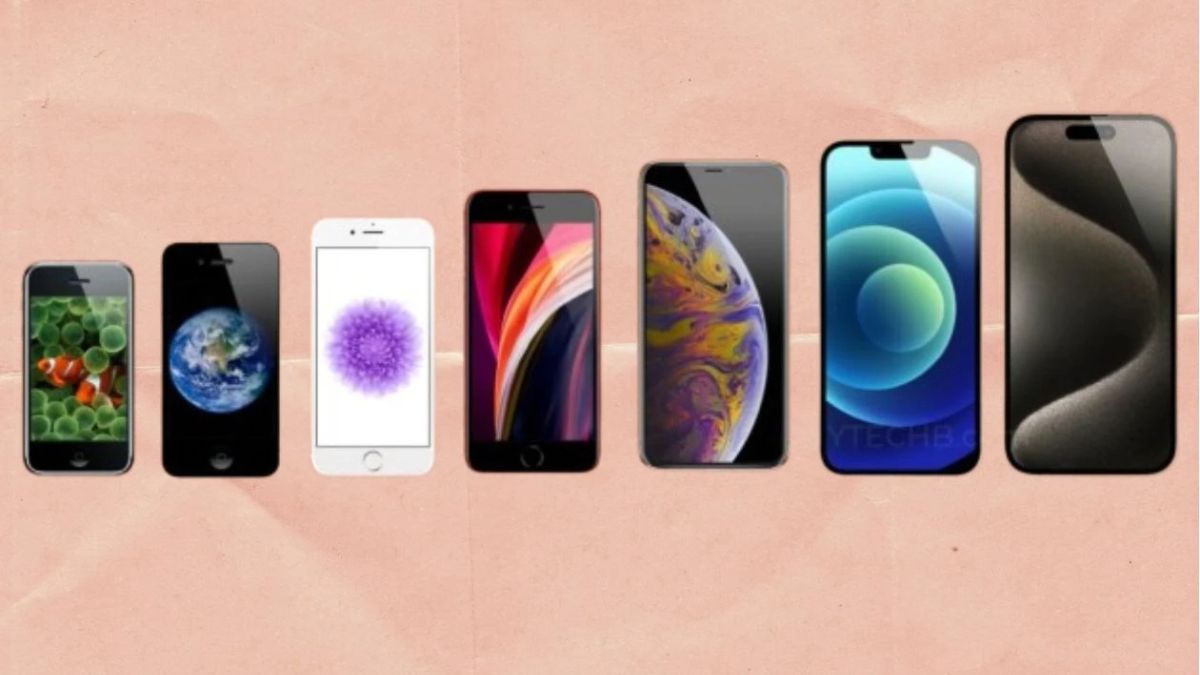Apple iPhone: On January 9, 2007, Steve Jobs stood before a packed auditorium at the Macworld Conference in San Francisco. The CEO introduced a revolutionary device that would forever change the individual’s work, and communication. iPhone celebrates its 18th Birthday today therefore to celebrate this milestone this article traces the evolution of iPhones.
Glimpse Into First iPhone
iPhone 1 featured a 3.5-inch screen, a 2-megapixel camera, and, for the first time, no physical keyboard. It combined a phone, an iPod, and an internet communicator which were the words of steve jobs at the launch. Although it seems it a bit old by today’s technological standards, its simplicity and elegance were. Additionally the first iPhone had a capacitive touchscreen that was revolutionary at that time.
Since the debut of the original iPhone in 2007, Apple has revolutionized the smartphone industry, introducing groundbreaking features with each new iteration.
Apple iPhone 2G
The iPhone 2G set the stage with its sleek design, multi-touch display, and iOS software.
Apple iPhone 3G
Then In 2008, the iPhone 3G introduced 3G connectivity, enabling faster data speeds and the App Store. The iPhone 3GS, released in 2009, improved performance with a faster processor and better camera.
iPhone 4
The iPhone 4, launched in 2010, brought a high-resolution Retina Display and a front-facing camera, marking the start of FaceTime video calling. The iPhone 4S followed in 2011 with the Siri voice assistant.
Apple iPhone 5
In 2012, the iPhone 5 increased screen size to 4 inches and introduced the Lightning connector. The iPhone 5s, in 2013, debuted Touch ID and a 64-bit processor.
Apple iPhone 6
2014’s iPhone 6 and 6 Plus saw larger screens and Apple Pay integration.
Apple iPhone 7
The iPhone 7 (2016) dropped the headphone jack and improved cameras, while the iPhone X in 2017 introduced Face ID and an OLED screen.
iPhone 12
The iPhone 12 series (2020) ushered in 5G support.
iPhone 13
The iPhone 13 (2021) brought improvements in battery life and performance. the model brought several upgrades, including a smaller notch, enhanced cameras with better low-light performance, and improved battery life. The Pro models featured a 120Hz ProMotion display and the powerful A15 Bionic chip, along with an improved Cinematic Mode for video recording.
iPhone 14
In 2022, the iPhone 14 series featured emergency satellite connectivity and upgraded cameras.
Each iPhone has continually raised the bar, solidifying Apple’s place at the forefront of mobile technology. Apple has consistently pushed the envelope with its iPhone series, introducing innovative features with each new release. The iPhone 14 series introduced significant advancements like Emergency SOS via satellite for off-grid communication.
iPhone 15
The iPhone 15 series arrived with even more refinements. The iPhone 15 Pro models showcased the A17 Pro chip and titanium construction for a lighter yet durable design. USB-C charging replaced Lightning, and camera improvements included a 5x optical zoom on the Pro Max model
iPhone 16
The iPhone 16 has brought more advancements in AI, augmented reality, and may possibly even bring a foldable form factor, continuing Apple’s legacy of innovation in mobile technology. Each new release reflects Apple’s relentless pursuit of perfection.
ALSO READ: Xiaomi Pad 7 Launch: A Game-Changer in the Tablet Market- Details Inside












